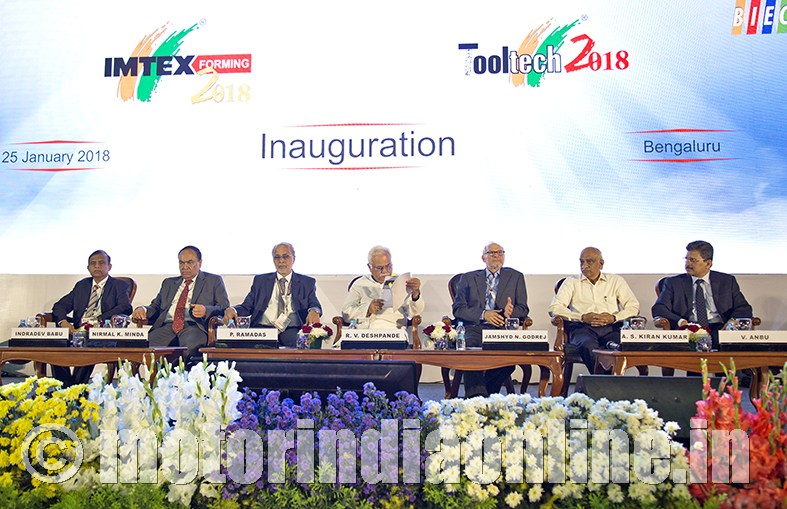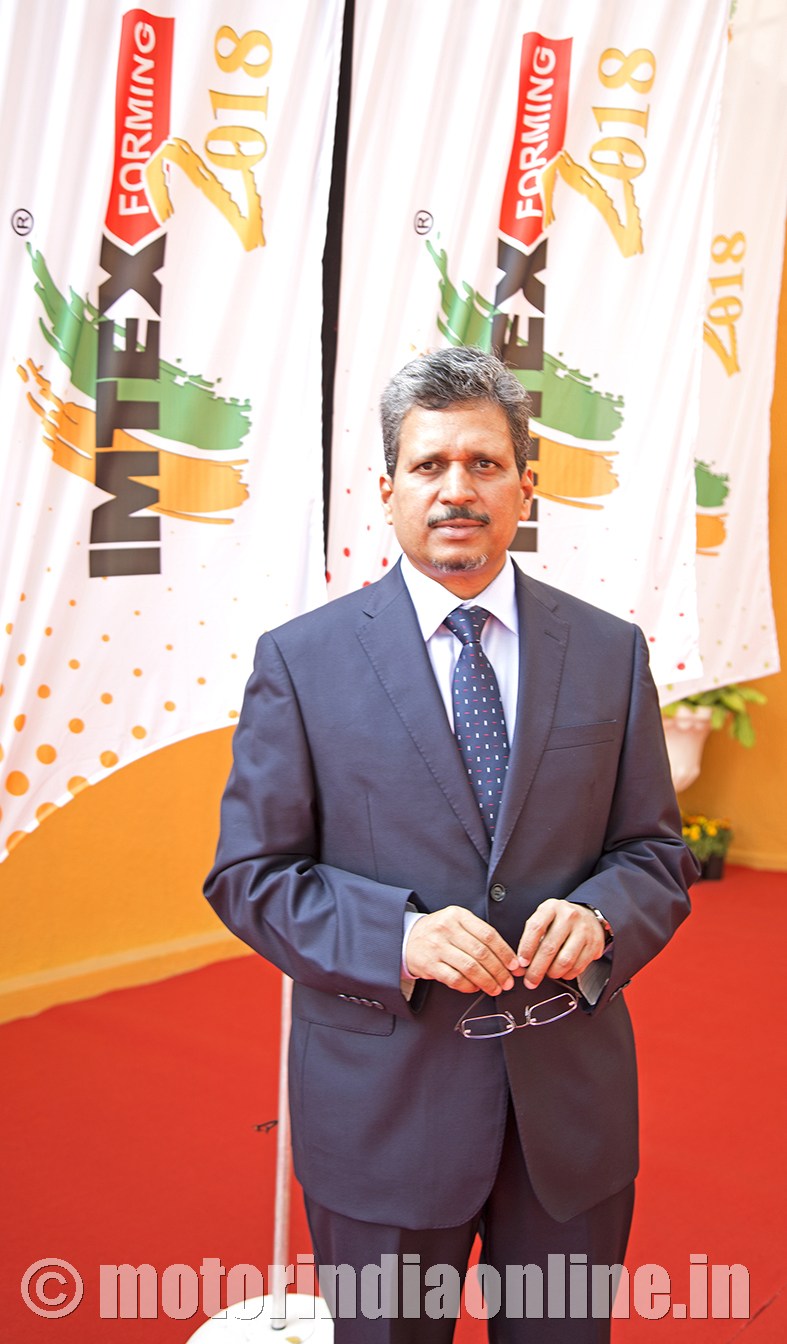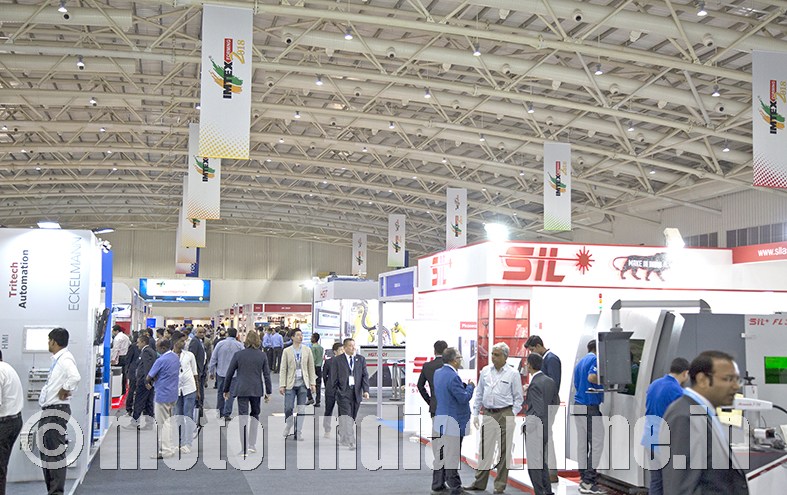IMTEX Forming 2018 organized by the Indian Machine Tool Manufacturers’ Association (IMTMA) from January 25 to 30 drew the world attention and provided a breathtaking display of innovations in the forming technology sector.

At the curtain-raiser, the international seminar on Forming Technology revealed four main focus areas, namely, changing trends in metal forming processes in the light of the increase in the use of composites, electric vehicles and lightweighting; maturing of hot forming, tube hydro-forming, roll forming and flow forming; evolution of superlative performance improvements, automation and Industry 4.0 ready features in sheet forming equipment; refinements and innovations in predictive processes; and developments in materials, tooling design and processing capability.
In an exclusive chat with Mr. V. Anbu, Director General and CEO, IMTMA, MOTORINDIA could gather details more about the impact of disruptions that are poised to drive the automotive sector on the machine tool and manufacturing industries.

Excerpts from the interview:
What is the machine tool industry scenario like, currently?
Today the machine tool industry is positive, so is the manufacturing scenario in India, both in terms of investment and production. Also the World Bank and other investment institutions are predicting that there would be 7.4 per cent growth. This quarter, and going forward in the next two years, I think we will have a good growth momentum. Also, we could be looking at investments picking up both in the automotive and other engineering segments. When we look at the machine tool industry, 50 per cent of its customer base is in the automotive and component sectors, so the machine tool industry is happy about the current scenario.
In 2016-17, we have seen a growth rate of almost 23 per cent in machine tool segment in terms of overall consumption. This year also, we are looking at atleast 25 per cent growth by the end of March. So, by the year end, you will have a consumption of about $2 billion worth of machine tools in the country, and domestic production will be about $1 billion and imports will be about $100 billion. The machine tool industry, a few years ago, was catering to only one-third of the entire market, but today it has gone up to 50 per cent. By 2022, we will reach two-thirds.
Looking at the future disruptive trends in the automotive sector, how is the machine tool industry gearing up?
Metal forming forms 20 per cent of the overall machine tool segment. And I expect this segment to grow at a faster rate. The machine tool industry and both the automotive and automotive components industries have always depended on each other for their solutions. At this exhibition, we have companies from 23 countries participating, besides our own indigenous companies. All global manufacturers are looking at the Indian manufacturing growth and are all here with their best possible solutions. Some companies focus on the CV sector, including the bus segment, besides three and four-wheeler segments and tractors. The last three have been the growth engines for the machine tool industry. If you see the order booking for machine tools coming from the automotive segment, you will see some of the companies are touching a growth rate of 30-40 per cent.
Now the future is lies in electric vehicles. Hence, machine tool companies have to be geared up to whatever disruption that EVs will bring. Currently, everyone is looking out for the possible scenario emerging and the ensuing solutions. Government policies and directives will play a major role in that.
What are the challenges that the machine tool industry faces in a price sensitive market like India?
India has always been a price sensitive market, and this is true of the machine tools industry too. In the last decade or so, companies have become highly conscious of quality and their dependence on quality machine tools has relatively gone up. So it was important for machine tool companies to focus on technology and new product development to really match up to the expectations of the customers, particularly in the automotive sector. Today, the key challenge would be: how do we actually look at the next level of technology development in machine tools. And there cannot be just one strategy. There are certain areas where we can develop it. But mostly it is upto the individual companies to decide what way they can get the strategies and recommendations in place. It also depends on the demand of their specific customers in the automotive sector.
What is the vision of IMTEX?
IMTEX is emerging as a major ecosystem where the machine tool players and other solution providers, academia, research institutes and other stakeholders come together along with the actual customer segments. In the not so distant future, this would be a major platform for companies to look at not only their current requirements in terms of solutions but also to look into the future and chalk out their own strategies in terms of investments and their manufacturing solutions.
With a plethora of knowledge sharing seminars graced by global speakers, IMTEX 2018 deserved the spotlight it needed for having inspired and encouraged its visitors to adopt the evolving trends in forming technology, which is slowly but steadily putting India on the world map for its innovative solutions.
